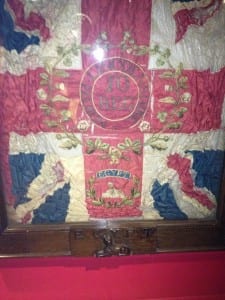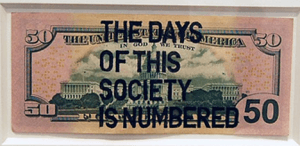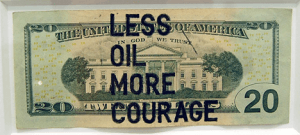Penny for your thoughts?
After a week of going into multiple banks and receiving a varied range of reactions, when asking to change our collected pounds into one penny coins, we thought about the use of the money outside our art piece. I became increasingly aware of the mass of money we had gathered, mainly because I had carried it! The weight of the endless plastic counting bags other than giving me backache, made me fully appreciate how much money we had collected and needed to complete out piece. Each member of the class had donated a sum of 3 pounds or above to our cause when we realized that our cause was just for a performance, what would you the money do once returned to its previous owner. Would each coin end up taken unexpected journeys like each of us had over the last few weeks, would it be used for good? Would it be put towards some form of regeneration? Or would it be dead money? Lost, stagnant, wasted like The Grandstand current use or like the soldiers, they stood for, majority of who were younger than 25. We felt we wanted to make sure the money wed carried, placed, scoured the banks of Lincoln high street to gather were put back into a project as positive as ours. It was this notion that inspired our question posed to the class, for them to part with their 3 pounds for the contribution of 90 pounds, 9 thousand one pennies, back into the community. We wanted the moneys use to carry on its good will after our piece so we began to research relevant, local charities that we felt were on the themes of women, equestrian, military based, the themes of the whole classes work as it was everyone’s money. We decided to present the charities to the class and see which they were most receptive too.
The first charity is; ‘Recycle a Race horse’ which is a Lancaster based rehabilitation center for ex race horses.(( http://www.thoroughbredrehabilitationcentre.co.uk/contact.php))
The second charity is; ‘Bransby Horse, rescue and welfare’ this local, which has two, bases one in Lincoln, that is concerned with providing a sanctuary for abused equine based animals and rehoming them.
((http://www.bransbyhorses.co.uk/home/home%20about%20us%20NEW.html))
The third charity is; ‘Addaction’ a charity that helps transform the lives of people affected by drug and alcohol abuse. Several member of the class has had personal interaction with the charity and some staff that work in center in Lincoln.
((http://www.addaction.org.uk/landing.asp?section=93§ionTitle=What+we+do))
The Fourth Charity is; ‘Scotty’s Little Soldiers’ after asking a serving pilot for the RAF base Waddington, he felt this was the most worthwhile charity he knew of related to the military in the UK. The charity supports the children of the serving/fallen soldiers. ((http://www.scottyslittlesoldiers.co.uk/aboutus.html))
The fifth Charity is; ‘Be Attitude’ a charity used by the homeless people of Lincoln, which offers them shelter, food, companionship and support. Again member of the class have been and interacted with the staff and users of the site. In close relation with the Local charity ‘Nomad’ The charity itself is almost site specific, based in St. Mary’s church, it was formed through a homeless person knocking on the parish’s door where the idea of the shelter was first formed. ((http://nomadtrust.org.uk/about/st-mary-le-wigford-partnership/))
The sixth charity is; ‘Women For Women’ An international charity, who supports emotionally and financially over 351,00 female survivors of war and conflict. ((http://www.womenforwomen.org/))
The final charity is; ’Raffa’ The infamous charity offering support for the RAF family (ex soldiers and their families.) The national charity helps all generations with a relation to the RAF. ((http://www.rafa.org.uk/Who-we-are))
All of the charities listed have ties to the themes listed above, but more prominantly without realizing all involve and are based or restoration and transformation, whether it of a life, an animal or a worn torn family/village. The theme of change and restoration is so evident in all these charities and the aims of all our pieces, changing attitude towards the heritage surrounding all components The Grandstands past.


